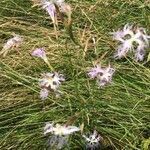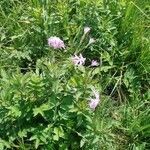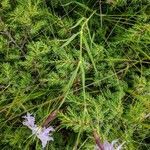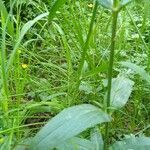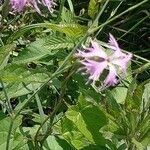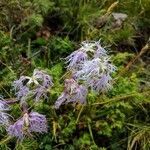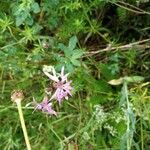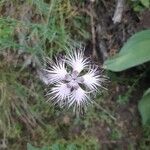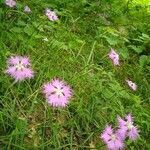Perennial, glabrous herb. Flowering stems erect or ascending, up to 70 cm from a basal tuft of vegetative shoots. Leaves grass-green, rather flaccid, narrowly elliptic, 4-12 by 0.3-0.6 cm, 1-nerved. Inflorescence a lax cyme with 2 or more flowers. Epicalyx scales 2-4, 1/4-1/3 the length of the calyx. Flowers fragrant. Calyx 2-3 cm long, narrowed towards the apex. Petals 15-35 mm, claw and lower part of lamina yellowish green to white, rest of lamina pale violet, sometimes white, lower part of lamina narrow, not touching, divided more than halfway down into very narrow, hair-like lobes.
A herb which forms mats. It grows up to 60 cm tall. The leaves are pale green-grey. The flower stems are slender. The flowers are mauve-pink. They have a green or purple "eye" at the centre. The flowers are large and have an aroma. They have 5 petals and are deeply and irregularly split.
